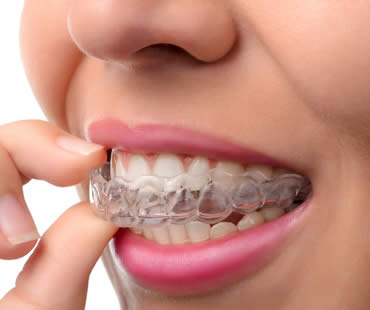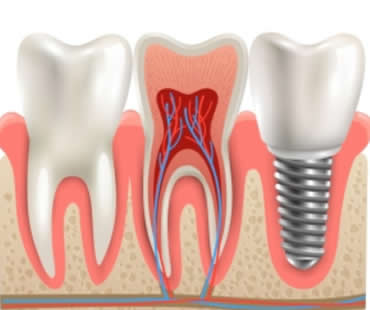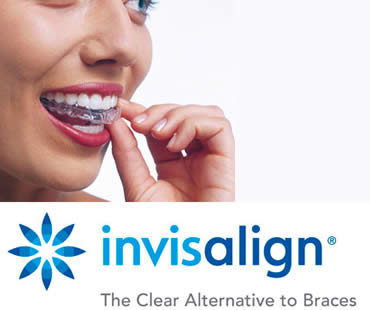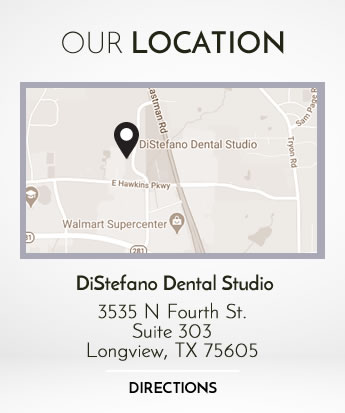
Metal braces used to go hand-in-hand with teenage years. Those awkward years were made so much worse with the taunts of “metal mouth” or “brace face.” Today, if your teen is dreading those comments, there are alternatives, particularly Invisalign.
Has your teen been told that braces are a necessity? Is he or she fearful of time spent in metal braces? Invisalign could be the solution, providing an “invisible” way to straighten and align crooked teeth.
Not all teens are suited for treatment with Invisalign. The aligners must be worn diligently, up to 22 hours a day, in order to work properly. Teens may be tempted to remove them more often than recommended, leading to far longer treatment time or ineffectual treatment.
Changes in Invisalign treatment are addressing the specific needs of teens with solutions like the blue dot wear indicator, which allows dentists and parents to determine if the teen is wearing the aligner the recommended amount of time.
Power ridges provide the maximum force necessary to exact complex movements in the mouth, including the movement of tooth roots. Because some teens are still in the process of having their teeth erupt, Invisalign aligners can feature eruption tabs or other design elements for teeth that are still in the process of erupting.
Benefits like these allow Invisalign to cater to a teen’s specific orthodontic needs while still providing all of the things that make Invisalign aligners so popular with patients of all ages.
Invisalign makes it possible to remove the plastic aligners while teens are eating or cleaning their teeth. Metal braces can trap unsightly bits of food, leading to a teen being self-conscious. Oral hygiene habits remain far easier with Invisalign than with traditional metal braces. Flossing takes place normally, while flossing with traditional metal braces is very challenging.
If you have questions regarding whether or not Invisalign or traditional metal braces are right for your individual teen, talk to a skilled orthodontist today. Your orthodontist will determine if Invisalign will be the most effective treatment to address your teen’s orthodontic needs.
Schedule your appointment at our Longview dental office

Sometimes a tooth is so severely damaged that the only way to save it is with root canal treatment. There is no reason to turn and run if your dentist advises this procedure. The treatment has advanced to the point that it’s often compared to getting a filling. There are certain steps that will be performed as part of nearly every root canal procedure.
Preparation
X-rays may be taken as part of the diagnosis process or to determine the extent of damage. Once the dentist is ready to begin treatment, a local anesthetic will be used to numb the area throughout the procedure.
Pulp removal
A rubber dam will be placed around the tooth to separate the area from the rest of the mouth, and to keep it dry from saliva. The tooth will be opened, often using a small dental drill, to gain access to the pulp inside the tooth. The damaged pulp will be removed, and if there is an abscess it will be drained.
Cleaning and filling
After the pulp is eliminated, the dentist will thoroughly clean the area. The root canal will be widened if needed to create an adequate space for the filling. Depending on the extent of the damage, this step of the process can take up to several hours to complete or it can be spread over more than one visit. A temporary filling is sometimes used to seal the area between visits. If infection is present, the dentist may prescribe antibiotics.
Sealing
The temporary filling will be removed and the permanent filling placed to fully seal the tooth and prevent future infection. If the tooth has been filled at the root, the risk of breaking is higher so a crown may be recommended for protection.
Crown placement
Crowns help prevent further damage or fracturing. If needed, the tooth will be reduced somewhat to allow space for the crown. It will be held in place securely with dental cement.
Recovery
After root canal treatment, the tooth should survive for many years. The procedure may be repeated if re-infection occurs.
Schedule your appointment at our Longview dental office

Dental implants are used to replace individual or missing teeth or to anchor loose dentures. For many patients with these issues, traditional dental implants may not a viable option. For example, a patient who does not possess adequate bone levels to anchor the implants would not be a good candidate for traditional dental implants. With mini dental implants, the bone required to anchor the implant successfully is much less.
Thanks to advances in implant dentistry, these patients have other options. Mini dental implants have emerged as an attractive choice for cases that are not conducive to the placement of traditional implants. For the patient who has inadequate bone, the bone required to successfully anchor mini dental implants is much less. Unlike traditional implants, the placement procedure for mini dental implants is a minimally invasive procedure that can be completed in one appointment by a specially trained general or family dentist. Because the procedure is less involved, the pain and length of recovery is greatly diminished.
Patients who have existing health conditions that would preclude them from more invasive surgery may find mini dental implants an extremely appealing option. Mini implants are also a perfect choice for restoring one missing or damaged tooth. Should implant failure occur, grafting procedures would not be necessary because of the small size with mini dental implants.
Most importantly, mini dental implants maintain the look, feel and function of your natural teeth. While you have to wait months for traditional implants to fuse with the bone, mini dental implants are ready for immediate use. Talk to your dentist to determine if mini dental implants would be a good option for your dental restorations and get ready to face the world with a confident new smile.
We treat patients from Longview and the surrounding area

A new way to straighten teeth has been introduced with Invisalign clear braces. As you wear the invisible plastic aligners, your teeth are gently shifted into better positions and you avoid many of the hassles associated with traditional braces.
Treatment begins with a consultation with a professional who has been trained and recognized to provide Invisalign braces. A thorough analysis of your teeth and jaw, as well as your smile goals, will be done to determine if Invisalign is right for you. If so, a treatment plan will be customized just for you after X-rays and impressions of your mouth are taken. The process also uses 3D images to create a computer simulation of your treatment.
Using the exact measurements taken of your mouth, a set of aligners will be made from clear plastic. Invisalign treatment advances in stages, with a different set of aligners worn every two weeks. They should be worn consistently for about twenty hours daily, but are removable for eating and cleaning. Maintenance is simple because the aligners can be gently brushed along with your normal brushing routine.
There are no restrictions about foods to avoid when undergoing Invisalign treatment, since the aligners are removed while eating. You also don’t have to worry about food getting stuck in the braces like with metal braces, and because food doesn’t contact the aligners there are no worries about stains. Invisalign braces can be worn while playing instruments or sports, although they should not be considered a substitute for a protective mouth guard.
Visits to the orthodontist are usually required every six months or so to monitor treatment and ensure ideal results. The amount of time it takes to achieve your smile goals depends on each patient and how consistently the aligners are worn, but treatment often lasts about a year.
If you live in the Longview area contact us today

One extremely common fear shared by many people is a fear of the dentist. Patients who possess this fear are often anxious and nervous about the sights, sounds and smells of a dentist’s office. Just imagining a routine visit can leave someone shaken and fearful, unable to sleep the nights prior to treatment.
Patients who share this common fear can put off necessary dental work. A fear of pain or needles can lead a patient to tolerate tooth pain or signs of infection in the mouth. If this sounds like you, talk to your dentist about sedation dentistry options.
Many people assume you must be fearful at a phobic level to benefit from sedation dentistry. This isn’t true! Sleeplessness, anxiety and low-level fear can all be helped with some form of sedation dentistry. Oral sedatives can be prescribed to be taken the night prior to a dentist visit, as well as the day of, to ensure a restful night’s sleep and an easy day before treatment.
Sedation dentistry during procedures is very safe, as you are monitored at all times by the dentist. Because of the deep level of relaxation possible utilizing sedation dentistry, more work can be done in a single visit, cutting down on trips to the dental office.
General dentistry procedures such as checkups, regular cleanings and cosmetic treatments can all be performed on a patient being treated with sedation dentistry. For a patient with fear and anxiety, each therapy can be made better with the addition of sedation dentistry.
Over time, with the use of sedation dentistry, some of your fears and anxieties can begin to lessen. Positive experiences can build up mental and emotional trust in the dentist, and patients can find that they need less and less of the sedation to feel comfortable.
If you need a dentist in Longview contact us today

If you have chosen to utilize sedation dentistry to address your anxiety or discomfort during dental treatment, you need to make preparations beforehand to be certain you are safe following your dental visit. Some sedation options leave you unable to drive or make decisions clearly, and you should be prepared to face whatever lingering effects come your way.
Conscious oral sedation is prescribed in the form of a pill that is taken orally. Typically, this pill is taken about an hour prior to the procedure in order to ensure relaxation and ease. Often a dentist will recommend that the patient take a dose the night prior to the treatment, making sure that the patient rests well and is in the best mental and physical condition for recovery. Laughing gas, or nitrous oxide, is another form of conscious sedation. Both the pills and the gas leave patients comfortable and at ease, but still responsive to commands by the dentist or staff.
The next level of sedation is intravenous sedation, also called IV sedation. This sedation is the fastest acting of all the sedation dentistry treatments. A known side-effect of IV sedation is memory loss, so most patients won’t remember what happened while they were “under.” Many patients believe erroneously that they were completely “out” or unconscious during treatment, but this isn’t true. You are still able to respond to commands, but the memory loss makes you feel as though you are asleep.
You will not be allowed to drive yourself following IV or conscious oral sedation. Even though you are up and walking and talking, it may take hours before the effects of the sedation wear off enough to make it safe for you to drive. Do not even consider trying to trick the dentist into thinking someone else is driving you home. You could cause a serious accident and harm yourself or others.
Talk to your dentist to determine what is recommended as far as recovery time goes for your specific sedation dentistry treatment choices.
Our dental office is located in Longview









